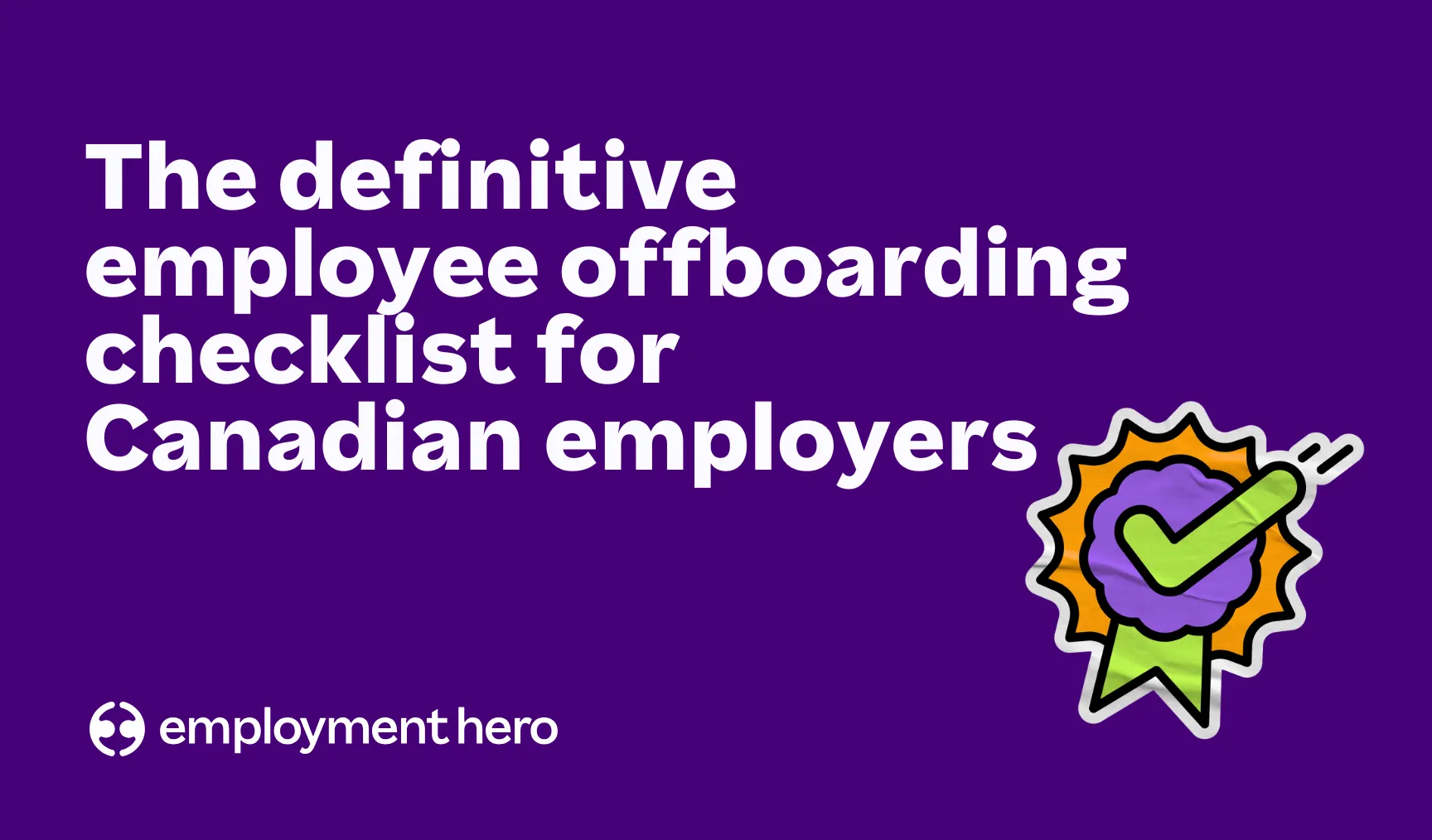Guide to Paying Remote Workers Across Provinces in Canada
Published
Guide to Paying Remote Workers Across Provinces in Canada
Published

Running payroll for a remote team takes more than good intentions — it takes know-how. Each province plays by its own rules and keeping up with deductions, overtime and compliance can feel like a full-time job on its own — especially when you’re figuring out how to pay remote workers across Canada the right way.
We’ve broken down what every Canadian employer needs to know about paying remote workers — so you can focus on leading your team, not chasing legislation.
What are the payroll obligations for remote employees in Canada?
Paying remote employees isn’t just about sending a pay cheque. Employers must follow both federal employment laws and the provincial or territorial standards where each employee performs their work, not where your business is based.
That means if your company is registered in Ontario but your employee works remotely from British Columbia, you’ll need to comply with B.C.’s Employment Standards Act for things like vacation pay, overtime and public holidays.
At the federal level, employers must:
- Register a payroll account with the Canada Revenue Agency (CRA)
- Deduct and remit income tax, Canada Pension Plan (CPP) or Québec Pension Plan (QPP) contributions and Employment Insurance (EI) premiums
- Provide T4 in addition to a Relevé 1 slip each year
- Maintain accurate records of employment (ROEs) for any job separations
For a more detailed breakdown on payroll setup or filing, visit the CRA’s payroll overview. Getting payroll right from the start sets the foundation for compliance. Whether you’re managing one remote hire or an entire distributed team, knowing how to pay remote workers correctly is key to staying onside with both the CRA and provincial standards.
Want to simplify payroll across provinces? See how Employment Hero helps Canadian businesses pay teams accurately — wherever they work.
How do foreign businesses pay remote workers in Canada?
Whether you’re based in Canada or abroad, the rules don’t change — payroll and compliance are always tied to where your people work. That’s why every employer paying remote workers across provinces needs a consistent process that applies the right laws in the right places.
- Establish a Canadian legal entity — You’ll need to register with the CRA, set up a payroll account and follow Canadian employment standards for each province your employees work from.
- Partner with an Employer of Record (EOR) — An EOR handles local compliance, payroll deductions and remittances on your behalf.
Either way, you’re still responsible for adhering to provincial employment standards — including overtime, vacation and statutory holidays.
What payroll deductions are employers required to make in Canada?
When you’re running payroll, accuracy matters as much as timing. These deductions may look straightforward, but when you employ remote workers across multiple provinces, accuracy gets trickier. Each province applies its own tax credits and contribution thresholds — making it even more important to stay on top of cross-province payroll compliance.
Here’s what to deduct from each pay run:
- Income tax: Federal and provincial, based on where your employee reports or is paid from.
- Canada Pension Plan (CPP) or Québec Pension Plan (QPP): Mandatory retirement contributions that come off both the employee and employer side.
- Employment Insurance (EI) or Québec Parental Insurance Plan (QPIP): Contributions that fund benefits for employees during periods of unemployment, parental leave or caregiving.
You’ll also need to send both portions — yours and theirs — to the CRA or Revenu Québec on time. The CRA’s payroll deductions guide breaks down every current rate and threshold.
How much do companies and employees contribute to the Canadian Pension Plan?
For employers with remote workers in and outside Québec, this is where payroll complexity shows up. Understanding the difference between CPP and QPP ensures you’re paying every remote worker correctly, no matter their province.
As of 2025, CPP contributions are calculated at 5.95% of pensionable earnings for both employers and employees, up to a maximum annual contribution of $4,034.10 each. The maximum pensionable earnings for 2025 is $71,300, with a basic exemption of $3,500, making the maximum contributory earnings $67,800.
Employers must also account for the second additional CPP contribution (CPP2), which applies to earnings between $71,300 and $81,200. Both employers and employees contribute 4% on this second tier, up to a maximum annual contribution of $396 each.
Employers must withhold CPP (and CPP2, if applicable) each pay cycle and remit both the employee and employer portions to the Canada Revenue Agency (CRA).
For the most current figures and exemption details, visit the CRA’s CPP contribution rates, maximums and exemptions page.
How much do companies and employees contribute to the Quebec Pension Plan?
The Québec Pension Plan (QPP) applies to employees who work in the province of Québec. For 2025, both employers and employees contribute 6.4% of pensionable earnings up to a maximum annual contribution of $4,339.20 each.
The maximum pensionable earnings for 2025 is $71,300, with a basic exemption of $3,500, meaning contributions apply to a maximum of $67,800 in earnings.
In addition, Québec employers must account for the second additional QPP contribution (QPP2), which applies to earnings between $71,300 and $81,200. Both employers and employees contribute 4% on that second tier, up to a maximum of $396 each for 2025.
Employers must stop deducting once these limits are reached for the year. If your business operates in more than one province, understanding the difference between CPP, CPP2, QPP and QPP2 is essential to paying remote workers accurately and staying compliant.
You can see the full table of rates and exemptions on the Revenu Québec QPP contribution page.
What is the overtime pay rate in Canada?
When you manage remote workers across provinces, tracking overtime can quickly become complex. Each region sets its own limits and pay rates, so it’s important to align your policies with local rules. In Canada, overtime eligibility depends on where the employee works. Most workers fall under provincial employment standards, while federally regulated industries — like banking, telecom and interprovincial transport — follow the Canada Labour Code.
For provincially regulated employees — the majority of Canada’s workforce — overtime kicks in at different points depending on the province:
| Province | Overtime triggers | Overtime pay rate |
| Ontario | 44 hrs/week | 1.5x regular rate of pay |
| British Columbia | 8 hours/day or 40 hrs/week | 1.5x after 8 hrs; 2x after 12 hrs in a day |
| Alberta | 8 hrs/day or 44 hrs/week | 1.5x regular rate of pay after 8 hrs or 44 hrs/week |
| Québec | 40 hrs/week | 1.5x regular rate of pay after 40hrs |
| Manitoba | 8 hrs/day or 44 hrs/week | 1.5x regular rate of pay after 8 hrs or 40/hrs/week |
If your team spans multiple provinces, check the local employment standards for each employee’s location. Overtime entitlements are based on where they actually perform their work — not where your business is registered.
Accurate records are non-negotiable. Whether you’re managing shifts, remote staff or flexible schedules, time and attendance tools can help you track hours precisely and pay employees correctly for every minute worked.
What is the minimum wage in Canada?

Similar to how overtime works, Canada doesn’t have one national minimum wage for paying remote workers. Each province and territory sets its own rate. However, an employee must always be paid at least the federal minimum wage. If the minimum wage of the province or territory where the employee works is higher than the federal minimum wage, the employer must pay the higher minimum wage.
As of October 2025 (Note: certain jurisdictions may also have a student rate):
| Jurisdiction | Effective date | Wage rate |
| Federal | 2025-04-01 | $17.75 |
| Alberta | 2019-06-25 | $15.00 |
| British Columbia | 2025-06-01 | $17.85 |
| Manitoba | 2025-10-01 | $16.00 |
| New Brunswick | 2025-04-01 | $15.65 |
| Newfoundland & Labrador | 2025-04-01 | $16.00 |
| Northwest Territories | 2025-09-01 | $16.95 |
| Nova Scotia | 2025-10-01 | $16.50 |
| Nunavut | 2025-09-01 | $19.75 |
| Ontario | 2025-10-01 | $17.60 |
| Prince Edward Island | 2025-10-01 | $16.50 |
| Québec | 2025-05-01 | $16.10 |
| Saskatchewan | 2025-10-01 | $15.35 |
| Yukon | 2025-04-01 | $17.94 |
For the latest rates, always check the Current and Forthcoming General Minimum Wage Rates in Canada
Managing payroll across provinces — and learning how to pay remote workers with confidence — takes precision, but it doesn’t have to feel overwhelming. Discover how Employment Hero can automate calculations, track time and support compliance in one place.
How to pay contractors in Canada
In today’s flexible labour market, many businesses mix permanent remote employees with independent contractors. The CRA draws a firm line between these two classifications, and getting that line wrong can create costly compliance issues.
It’s important to understand that independent contractors are not employees, and they’re responsible for managing their own taxes, CPP/QPP contributions and Employment Insurance (EI). They invoice for their services and handle their own deductions.
If a worker operates more like a regular employee — taking direction or working fixed hours — the CRA may consider them an employee, even if you’ve labelled them otherwise. Misclassification can lead to back-dated CPP and EI payments, penalties and interest. The agency outlines the criteria clearly in its guide to determining a worker’s status.
In what currency do companies pay remote workers in Canada?
Canadian employers must pay wages in Canadian dollars (CAD), as required under provincial employment standards. For international businesses hiring in Canada, that means converting funds to CAD before running payroll and remitting deductions to the CRA or Revenu Québec.
If you’re paying remote teams across borders, it’s best to confirm your payment process meets both local currency and tax requirements before each pay run.
What are the legal and compliance requirements during onboarding?
Onboarding remote workers isn’t just about making a great first impression — it’s also where your legal and payroll obligations begin. Employers in Canada need to collect, verify and store key employee information to stay compliant with the Canada Labour Code, CRA requirements and each province’s Employment Standards Act.
Here’s an overview of the main requirements for onboarding a new employee:
- Confirm eligibility to work in Canada.
Employers must ensure all new hires are legally entitled to work in Canada (citizen, permanent resident or valid work permit). - Collect essential documents.
Gather the employee’s Social Insurance Number (SIN), completed federal and provincial TD1 forms, and a signed employment contract. - Share company policies and entitlements.
Provide information on privacy, data protection, workplace conduct, overtime, vacation entitlement and public holiday entitlements under the relevant provincial Employment Standards Act. - Confirm occupational health and safety training.
Each province requires employers to inform employees about workplace health and safety policies and their rights to refuse unsafe work. - Communicate privacy and data protection practices.
Under PIPEDA or equivalent provincial privacy laws, employers must tell employees how their personal information will be collected, stored and used. - Set up payroll and recordkeeping.
Obtain a void cheque or banking details for direct deposit, and retain employment records for at least three years after employment ends, as required by the Canada Labour Code.
Disclaimer:
This overview summarizes the most common onboarding and payroll compliance steps for Canadian employers. Requirements may differ by province or industry (for example, health care, construction, or federally regulated sectors). Always verify the latest rules through:
- Canada Revenue Agency
- Your provincial or territorial employment standards authority (e.g. Ontario, British Columbia, Alberta, Québec).
For a deeper look at the legal and compliance requirements of onboarding, read our employee onboarding checklist.
Creating an inclusive onboarding experience

While this guide focuses on paying remote workers, we mustn’t forget about the nuances that come with onboarding these remote employees. Whether in person or virtual, a strong onboarding process sets the tone for how employees connect, collaborate and thrive – wherever they are.
Ways to make onboarding inclusive:
- Personalize welcome kits with local touches and time-zone awareness.
- Assign buddies or mentors to build connections early.
- Offer flexibility in training schedules and communication tools.
- Use accessible formats for all materials to support diverse needs.
The goal? Every new hire, no matter their province, should feel seen, supported and ready to succeed.
How to measure onboarding success and employee satisfaction?
You can’t improve what you don’t measure — but the right metrics go beyond checklists. Effective onboarding of remote workers isn’t just about how fast someone starts producing work. It’s about whether they feel connected, capable and confident in their new role.
Here’s how to measure onboarding in a way that actually means something:
- Time to productivity: Track how long it takes for new hires to reach expected performance levels. If it’s consistently slow, it could point to gaps in training or unclear processes.
- Employee feedback: Run short pulse surveys during the first week, month and quarter. Ask new hires how supported they feel, whether they understand their role and if they have what they need to succeed.
- Retention and engagement: Look at early turnover rates (within the first six months). High churn often signals cultural or expectation mismatches — not necessarily bad hires.
- Manager feedback: Check in with managers on how confident they feel about their new team member’s readiness and where they need more support.
When you bring these insights together, you start to see patterns — not just numbers. Maybe onboarding needs more hands-on mentorship, or maybe it’s time to improve documentation. What matters most is using what you learn to make the next experience smoother for everyone.
What are common onboarding mistakes to avoid?
Even the best intentions can fall short when onboarding remote employees. The difference between a smooth start and a rocky one often comes down to preparation, clarity and follow-through.
Here are some of the most common missteps — and how to avoid them:
- Overloading new hires. Dumping every document, video and Slack thread on day one overwhelms people fast. Space learning out over the first few weeks and focus on what’s immediately relevant to their role.
- Overlooking local compliance. Each province handles things like tax forms, employment standards and payroll documentation differently. Build a checklist that aligns with each location — our guide to payroll best practices for Canadian SMBs is a good starting point.
- Leaving communication up to chance. Remote teams thrive on clarity. Define how you collaborate, which tools to use and what “responsiveness” really means — so no one’s left guessing.
- Forgetting the human connection. Schedule regular one-on-ones and encourage informal catch-ups. Culture doesn’t just happen in an office; it’s built through small, consistent moments of contact.
Great onboarding doesn’t have to be perfect — it just has to feel intentional. When new hires feel seen, supported and clear on expectations, they’ll get up to speed faster and stay engaged longer.
How to tailor onboarding for different role types and levels
No two employees start from the same place — so their onboarding shouldn’t look the same either. Here’s how to shape the experience:
- Frontline and entry-level roles
These hires thrive on structure. Keep the first week focused on hands-on training, shadowing and quick feedback loops. Give them clear steps and visible progress — it builds confidence and reduces early turnover. - Specialist or technical roles
These employees care about access and autonomy. Make sure they have system logins, data permissions and documentation ready on day one. Pair them with a peer who can show how things really work beyond the process docs. Early mastery of tools builds trust and speeds up productivity. - Leadership hires
Leaders don’t just need onboarding — they need orientation. Focus on company goals, team dynamics and how decisions get made. Give them space to meet cross-functional peers and early wins that show impact. A strong start here cascades down through the whole team.
Thoughtful onboarding isn’t just about efficiency — it’s about belonging. When you meet employees where they are, they ramp up faster, engage more deeply and stick around longer.
Ready to take the complexity out of paying remote teams?
Remote work has changed how Canadians build teams. Multi-province compliance isn’t just about ticking boxes — it’s about supporting people, wherever they plug in.
Employment Hero makes that easier. From payroll and deductions to onboarding and engagement, everything connects in one platform built for modern Canadian businesses.
See how Employment Hero helps you pay, manage and celebrate your team — no matter where they work.
To download the guide, we just need a few quick details.
Related Resources
-
 Read more: The definitive employee offboarding checklist for Canadian employers
Read more: The definitive employee offboarding checklist for Canadian employersThe definitive employee offboarding checklist for Canadian employers
Download a free employee offboarding checklist. Ensure a smooth transition, protect your business and leave a positive impression on departing…
-
 Read more: Your essential job offer letter guide for Canada
Read more: Your essential job offer letter guide for CanadaYour essential job offer letter guide for Canada
Download our free guide to crafting Canadian job offer letters. Understand compliance with Canadian employment laws and create professional job…
-
 Read more: Start the new year with confidence: First pay run of 2026 checklist
Read more: Start the new year with confidence: First pay run of 2026 checklistStart the new year with confidence: First pay run of 2026 checklist
Make your first 2026 pay run smooth. Download the free checklist with CRA updates, deduction reminders and payroll prep steps.

















